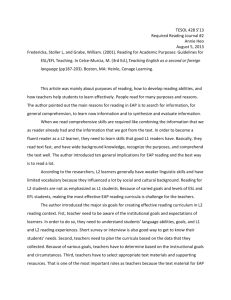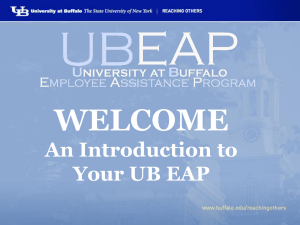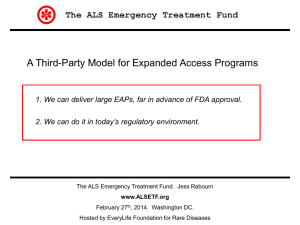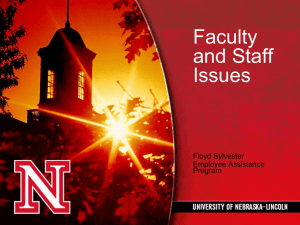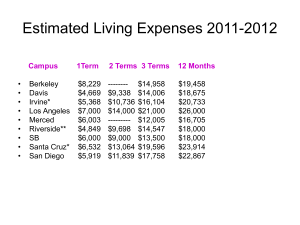barsony. chapter 1_2.9.15
advertisement
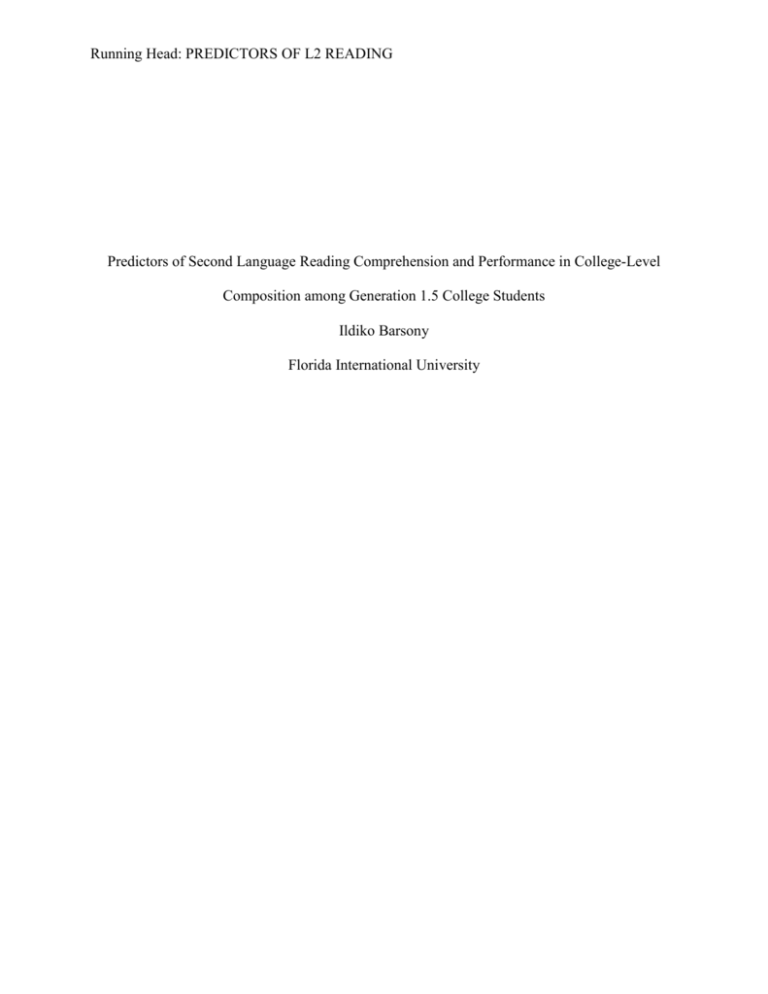
Running Head: PREDICTORS OF L2 READING Predictors of Second Language Reading Comprehension and Performance in College-Level Composition among Generation 1.5 College Students Ildiko Barsony Florida International University PREDICTORS OF L2 READING 2 CHAPTER 1 INTRODUCTION Community colleges embody democracy in America. With their open door policies, academic support systems, and lower tuitions, they provide a feasible alternative to the 4-year university. The 28 colleges of the Florida College System serve half a million students of diverse backgrounds, and 13 % of these students attend Miami Dade College (Florida Department of Education, 2011). Miami Dade College (MDC) is not only the largest college in the Florida College System but also the largest college by enrollment in the United States (National Center for Education Statistics, 2010). Students at Miami Dade College report 85 different native languages (L1), with 40% of the student population speaking L1 Spanish and 4% speaking L1 French or Creole (Miami Dade College, 2014b). Non-native speakers of English, over 30 thousand individuals, attend classes for a variety of reasons. Those who have earned degrees in their native countries might enroll in credit-bearing English courses to gain the academic English proficiency that will enable them to pursue their professional careers in the United States. Other non-native speakers of English intend to earn their associate or bachelor degrees at the college. “Traditional” students of 18-20 years of age constitute 32% of the credit student population at MDC, and another 32% of credit students are younger than 26 years of age (Miami Dade College, 2014a). With half the student population speaking a L1 other than English, many of these young college students are likely to be Generation 1.5 students, foreign-born and U.S. educated children of first-generation immigrants, who complete some of their K-12 education in their home country and some in the United States. PREDICTORS OF L2 READING 3 Non-native speakers of English, including Generation 1.5ers, who enroll in credit programs must demonstrate a satisfactory command of the English language. At the time of application, students with high school diplomas from non-English speaking countries as well as those who were in ESOL programs in their junior and senior years in American high schools are required to first take the COMPASS-ESL test to determine English language proficiency. Those with scores below the benchmark are referred to take English for Academic Purposes (EAP) courses to bridge the linguistic preparedness gap before enrolling in coursework toward a degree. EAP students are required to demonstrate college readiness either by achieving a college-level score on Florida’s Postsecondary Education Readiness Test (P.E.R.T.) or by completing the EAP program in order to enroll in college-level studies. In 2013, with Senate Bill 1720 (SB 1720), the Florida Legislature made placement testing optional for active members of the US armed forces and for individuals who started a Florida public high school after 2003 and graduated from a Florida public high school with a standard high school diploma. Students who are exempt from placement testing can now enroll in college level composition (ENC1101) and mathematics (MAT1033) courses without or regardless of placement test scores. It is assumed that many Generation 1.5 students who were mainstreamed before their junior year in high school are among those who opt to enroll in college level composition courses and are at increased risk of failure. In the following sections, a brief review of the characteristics of Generation 1.5 students and a summary of Miami Dade College’s EAP and Developmental Education programs will be followed by a short discussion of the forgotten variable, native language literacy, and its potential in assisting Generation 1.5 students. Generation 1.5 Students PREDICTORS OF L2 READING 4 The terms Generation 1.5 and Generation 1.5 students are rather ambiguous (OrtmeierHooper, 2008). The term Generation 1.5 was first used in the late 1980s by Rumbaut and Ima (1988) to refer to individuals who were born in foreign countries and immigrated to the United States before age 12 (Rumbaut, 1994) although the term has been used more liberally in the recent literature (Blumenthal, 2002; Goldschmidt & Miller, 2005; Peña, 2010). In general, Generation 1.5 shares characteristics of both first generation (foreign-born individuals who immigrated to the United States as adults) and second generation (US-born children of firstgeneration immigrants). Culturally, their worlds are split between the native culture at home and English at school (Goldschmidt & Miller, 2005). For the purpose of this study, the definition of Generation 1.5 is less important than the definition of Generation 1.5 student. In this study, the term Generation 1.5 students will be used for foreign-born and U.S. educated children of first-generation immigrants, who complete some of their K-12 education in their home country and some in the United States and whose English reading, writing, and, to some extent, speech shows second-language characteristics. If Generation 1.5 students were mainstreamed before their junior year in high school, they are exempt from taking a college placement test, provided they earned standard high school diplomas. However, if they wish, they can take the P.E.R.T. or other college readiness measures (SAT, ACT) and can enroll in remedial (Developmental Education) courses based on the results. Those students who graduate with non-standard high school diplomas from public schools must take a placement test and enroll in remediation if necessary. If Generation 1.5 students receive ESOL services during their last two years of high school, they are required to take the COMPASS-ESL placement test upon entering Miami Dade College. Based on the results, they may either proceed as regular college students or be placed at PREDICTORS OF L2 READING 5 one of six levels of English for Academic Purposes, remediation specifically designed for nonnative speakers. English for Academic Purposes The traditional EAP program at MDC consists of six levels of four three-credit courses: reading, speech/listening, writing, and grammar. In addition, students are required to take two one-credit labs, a speech lab and a writing lab, along with the courses. Thus, students take a total of 14 credits at each of the six levels of the EAP program. If a student starts at level 1, that student will need 2 years to complete the program provided the student takes a full load of 14 credits each term, including the summer. To determine placement, students take the COMPASSESL test, and while in the EAP program, they are also required to take the P.E.R.T. In the following section, I briefly describe these two placement tests. COMPASS-ESL Miami Dade College, for the purposes of course placement, considers non-native speakers those students who graduate from a non-English-speaking high school, take English for Speakers of Other Languages (ESOL) during their 11th or 12th grade at an American high school, or earn a GED in Spanish. To be eligible for college-level studies, these students must demonstrate proficiency in the English language on the Test of English and a Foreign Language (TOEFL) or on COMPASS-ESL, a placement test measuring their English language skills. Students who are not proficient in English are placed in the EAP program based on their COMPASS-ESL placement test scores. This test measures language competence in English listening, reading, and grammar. If non-native speakers do not demonstrate academic proficiency in the English language, they are placed in the English for Academic Purposes (EAP) program before they are allowed to take a regular college placement test (MDC, 2012a). PREDICTORS OF L2 READING 6 Postsecondary Education Readiness Test EAP students at level 4 or above students must take the Postsecondary Education Readiness Test (P.E.R.T.) if they intend to continue their studies at MDC. In the next semester, these students either take ENC 1101 or advanced (5 and 6) levels of EAP. Thus, passing the P.E.R.T. early enables students to bypass 28 mandatory credits in at least 2 semesters. Those EAP students whom the COMPASS-ESL places at level 5 or 6 must take the P.E.R.T. prior to registering for EAP courses. If their scores do not satisfy the college-ready requirement, they must complete the EAP program. However, they are able to enroll directly in ENC 1101 upon completing level 6. This EAP - ENC 1101 transition process was recently streamlined. Before 2013, EAP students were required to complete the EAP sequence, take the P.E.R.T, and enroll in remedial courses if they did not succeed. Historically, many EAP students struggled with higherlevel academic reading in English, and close to 50% of those who took the reading portion of the P.E.R.T scored below the college-ready benchmark (Rodriguez, 2010; Rodriguez, 2011). Developmental Education The Developmental Education program is designed to provide remediation in reading, writing, and mathematics to students whose college placement test scores in these subjects are below college-ready level. Before recent college policy changes, the Developmental Education (remedial, College Prep) program provided services not only to native speakers but also to EAP program graduates who did not score at the college-level on the P.E.R.T. While EAP program graduates are no longer required to take Developmental Education reading and writing courses, the Developmental Education program still services non-native speakers of English: Generation 1.5 students who were mainstreamed before their junior year in high school. PREDICTORS OF L2 READING 7 The reading and writing programs both consist of two levels and include lab in the 4 credit hours students pay for each class. In reading, the upper level competences expand on the lower level ones. Text difficulty in the lower level reading course is equivalent to texts in grades 6-8, while in the upper level reading course text difficulty is equivalent to texts in grades 9-12. Both levels of writing courses address grammar, but students in the lower level writing course produce paragraphs while in the upper level course essays. Native Language Literacy: The Missing Variable By the time EAP students reach the upper levels of the program, their L2 proficiency reaches the upper threshold (Cummins, 1979) where they could reap the cognitive benefits of being bilingual. To the practitioner, the variety among students’ prior literacy experiences becomes obvious at these levels. Students who began the EAP program at lower levels, barely earning passing grades, struggle in their EAP level 5 and 6 courses, while those whose COMPASS-ESL scores placed them into these levels often do considerably better. The lowerperforming EAP students might lack something the EAP program does not address: prior literacy experiences, especially in their L1, and Generation 1.5 students may be especially at risk of not having sufficient L1 foundations because academic exposure to the L1 likely ceased upon arrival in the United States. Of the four EAP courses, reading, writing, grammar, and speech/listening, reading might especially be difficult as students are required to read college-level texts, both expository and narrative. To understand the challenge college-level reading in English represents for students whose L1 foundations might be limited, I looked for a reading model that incorporated the L1 variable in explaining L2 reading and found Elizabeth Bernhardt’s (2011) compensatory model of second-language reading. This model will frame the present study. PREDICTORS OF L2 READING 8 Bernhardt’s (2011) model captures numerous variables that have been found to influence L2 reading comprehension. The two most important variables in the model are L1 literacy and L2 language knowledge, covering 50% of the variance together. L1 literacy, accounting for up to 20% of the variance in comprehension scores, “includes how a reader’s first language realizes L1 phonemics, how texts are structured, purposes for reading, beliefs about reading, knowledge of how words and sentences are structured, and so forth” (Bernhardt, 2011, p. 35). The Bernhardt model is presently the most comprehensive second language reading model, encompassing many of the variables that have been shown to predict reading comprehension in a second language. Problem Statement Achieving college-level reading comprehension in the second language is a difficult endeavor, especially if one lacks appropriate native language literacy foundations. Generation 1.5 students might especially be affected as their L1 literacy instruction experienced a hiatus, if it did not completely cease, upon the students’ arrival in the United States. Presently, Miami Dade College does not collect data about its Generation 1.5 population. Consequently, we know little about who they are and what literacy foundations they might have. Information about the prior L1 experiences of EAP students in general is similarly weak and mostly anecdotal as the EAP program evaluates its incoming students solely on L2 measures. L1 literacy is not addressed by any of the course competencies either. This proposed study will address these gaps in our understanding of Generation 1.5 students’ academic performance by focusing on the two cognitive variables, L1 literacy and L2 proficiency, that could account for up to 50% of the variance in reading comprehension according to Bernhardt’s (2011) compensatory model of second-language reading. The study will investigate the contribution of these variables to the PREDICTORS OF L2 READING 9 variance in reading comprehension test scores and academic performance in college-level English classes among Generation 1.5 students at Miami Dade College. Purpose of the Study The purpose of this proposed study is to examine the contribution of L2 proficiency and L1 literacy to the variance in L2 reading comprehension and performance in college-level composition courses among Generation 1.5 students, graduates and non-graduates of the EAP program, at Miami Dade College. In doing so, the proposed study aims to assist non-native students and their instructors by providing a better understanding of the use of L1 literacy skills in L2 reading and academic performance. Findings may be instrumental in the identification of potential at-risk groups of students, for whom early intervention strategies can be designed and implemented to reduce the risk of failure. Findings of this study may also be used to guide efforts to improve the effectiveness of the EAP program for the general EAP student population by incorporating the predictors that may not be addressed adequately by current course competencies but may highly correlate with reading comprehension scores. Furthermore, the findings could inform attempts to improve the EAP program at other institutions with similar EAP student populations. Delimitations of the Study This proposed study will be delimited to Generation 1.5 students at Miami Dade College. For this study, only the two major cognitive variables included in the compensatory model are considered. No other cognitive or affective variables in the Bernhard model will be considered. However, ENC 1101 instructors’ ESL training and the absence or presence of EAP or Developmental Education coursework will be added as an additional predictor variables when examining performance in ENC 1101. PREDICTORS OF L2 READING 10 Assumptions of the Study The following assumptions underlie this study. First, the self-reported data from the participants are assumed to be error-free. Second, participants’ native language literacy skills are assumed to vary. Although students must possess high school diplomas to be eligible for the EAP program, those may have been earned in English or in another language. For instance, students whose native language is Haitian Creole may have earned a French high school diploma in Haiti or an English high school diploma in the United States. It is assumed that the more years of formal education in the native language an individual possesses, the more advanced his or her native language literacy skills are. According to Burt, Peyton, and Van Duzer (2003), students with “limited or no literacy in their first language have likely had little or no experience with formal education” (p. 16). A third assumption is that formal study of the English language is positively correlated to English proficiency. The more time an individual spends taking English classes and formally studying the language, the more academically proficient he or she becomes. Significance of the Study The U.S. economy will be increasingly dependent on its educated workforce. This study sheds light on non-native students’ reading comprehension, and essential skill to obtaining a college degree. It is hoped that the findings of this study will help to improve students’ academic preparation. This study can contribute to one of the implementation goals of MDC’s Student Achievement Initiative, the Miami Dade College-specific Completion by Design initiative, which is to "[d]esign an English for Academic Purposes (EAP) and Developmental Education curriculum that will serve as a more efficient "on ramp" to college-level programs of study" (MDC, 2012c). The findings of this study will also contribute to the limited research base on nonnative college students’ reading comprehension using Bernardt’s compensatory model. PREDICTORS OF L2 READING 11 Research Questions This proposed study is guided by the following research questions. General literacy background 1. What literacy backgrounds do Generation 1.5 students at Miami Dade College have? English reading comprehension 2. What relationship exists between Generation 1.5 students’ native language literacy and English reading comprehension? 3. What relationship exists between Generation 1.5 Haitian prior coursework in developmental education or English for Academic Purposes and English reading comprehension? 4. What relationship exists between Generation 1.5 students’ English language knowledge and English reading comprehension? Performance in English Composition 1 5. What relationship exists between Generation 1.5 students’ native language literacy and performance in English Composition 1? 6. What relationship exists between Generation 1.5 students’ prior coursework in developmental education or English for Academic Purposes and performance in English Composition 1? 7. What relationship exists between Generation 1.5 students’ English language knowledge and performance in English Composition 1? 8. What relationship exists between the ESL training of English Composition 1 professors and Generation 1.5 students’ performance in English Composition 1? Definitions and Operational Terms PREDICTORS OF L2 READING 12 Reading Comprehension English reading comprehension will be measured by the Gates-MacGinitie reading test. Level AR of this test was designed for use by tertiary institutions that need to assess the general reading achievement of their students, and it was normed at community colleges across the United States. Participants were enrolled in credit English courses or were in the last remedial English class. Test forms S and T have Kuder-Richardson Formula 20 reliability coefficients of .89 and .93, respectively (Maria & Hughes, 2008). The instrument is often administered to nonnative speakers of English (Kamhi-Stein, 1998; Roessingh, Kover, & Watt, 2005). Performance in English Composition 1 Performance in English Composition 1 will be measured by end-of-term grades earned in the English Composition 1 course. First Language (L1) Literacy First language (L1) or native language literacy refers to students’ ability to read and write in their native language. The data will be self- reported on a version of the Language Experience and Proficiency Questionnaire (LEAP-Q) (Marian, Blumenfeld, & Kaushanskaya, 2007) that was modified for the purposes of this study. English Proficiency English proficiency will be measured by [need an instrument of vocabulary and grammar]. According to the Bernhardt (2011) reading model, L2 knowledge, accounting for 30% of the variance in reading comprehension scores, consists of “grammatical form, vocabulary knowledge, the impact of cognates, the distance between first language and second language, the value system attached to literacy, and so forth” (p. 35). PREDICTORS OF L2 READING 13 Summary This proposed study seeks to understand two variables, L1 literacy and L2 proficiency, and their relationship to Generation 1.5 students’ L2 reading comprehension and performance in college-level composition courses. Presently, little is known about Miami-Dade College’s Generation 1.5 population and their L1 literacy foundations. This proposed study will address these gaps in our understanding of Generation 1.5 students’ academic performance by focusing on the two cognitive variables, L1 literacy and L2 proficiency, that could account for up to 50% of the variance in reading comprehension according to Bernhardt’s (2011) compensatory model of second-language reading.

